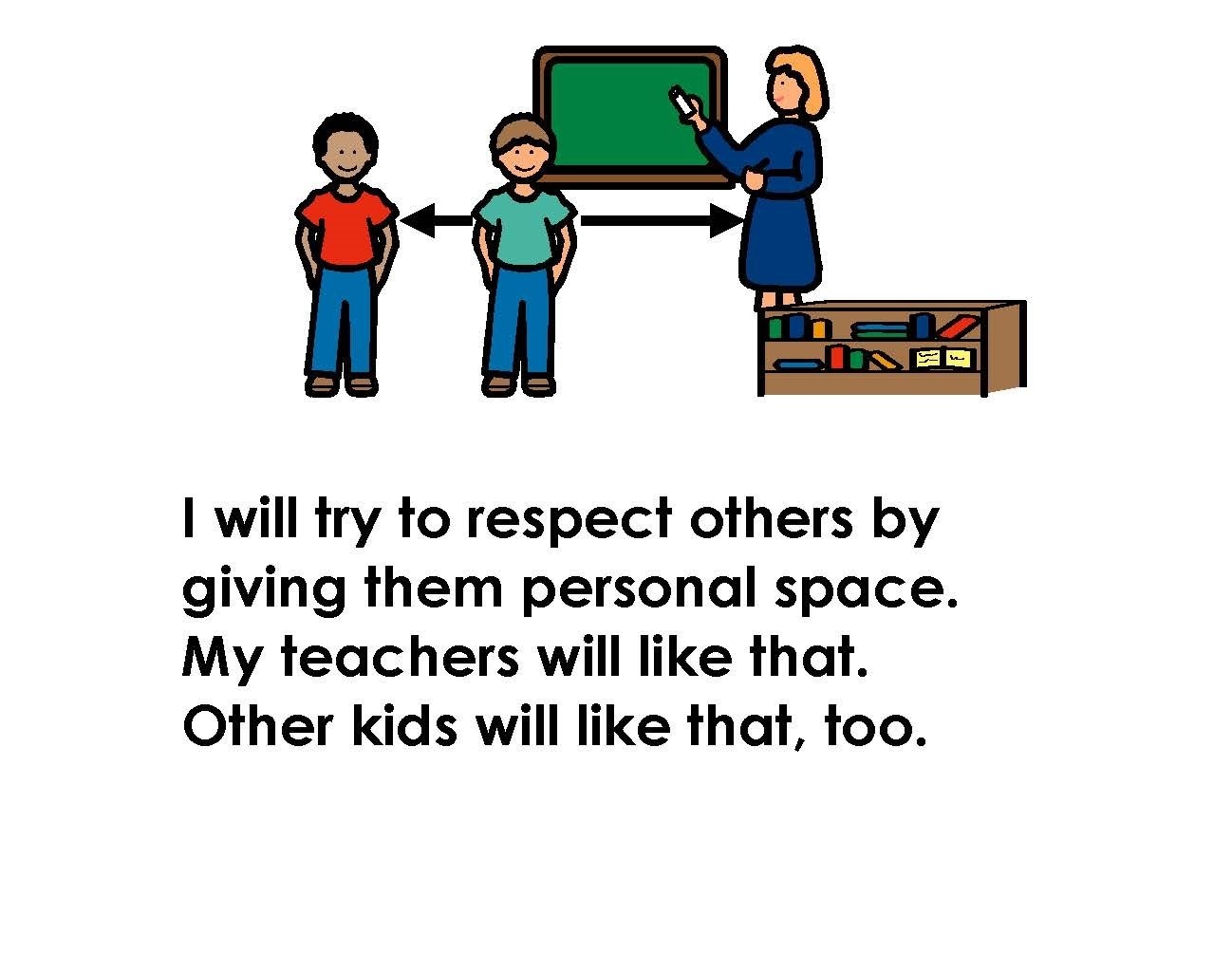
Social Narrative
Social Narrative
Personal Space
When to use:
- Changes in routines.
- Learn new behaviors/skills.
- Student has difficulty focusing on relevant cues in their environment.
How to use:
- Identify the situation and target behavior/skill.
- Collect baseline data to determine appropriate instructional goal.
- Write the social narrative
- Use concise language highlighting relevant environmental cues
- Use first person language (“I will sit in the chair”) or second person language (“Cory will sit in the chair”)
- Vary the sentence types (descriptive, perspective, affirmative, directive, control)
- Include visuals appropriate for the student’s age and comprehension level
- Consider laminating
- Implement teaching procedure (see below section: How to teach)
- Monitor student progress through your data collection system and adjust as needed.
Tips:
- Make sure the target behavior/skill is operationally defined.
- Make sure the goal is observable and measurable.
- Use language appropriate for the student’s age and comprehension.
- Avoid using a majority of directive sentences.
- Be conscious of how much information is on one page. Try to keep to one sentence, or one concept per page.
- When making adjustments, change a single variable at a time, and continue to analyze data to determine success or the need for another adjustment.
How to teach:
- Decide when and how often to read the social narrative with the student. They are most successful when they are a regular part of the student’s routine.
- Use when the student is calm.
- It is beneficial to read prior to an upcoming situation.
Tips:
- Some stories are beneficial to be read at home as well!
- Social narratives can be read to the student by a peer too.
- Upon success, reading the story can be shifted from staff to the student, if they are a reader (use your data to guide these decisions).
- Frequency can be faded upon success (use your data to guide these decisions).
